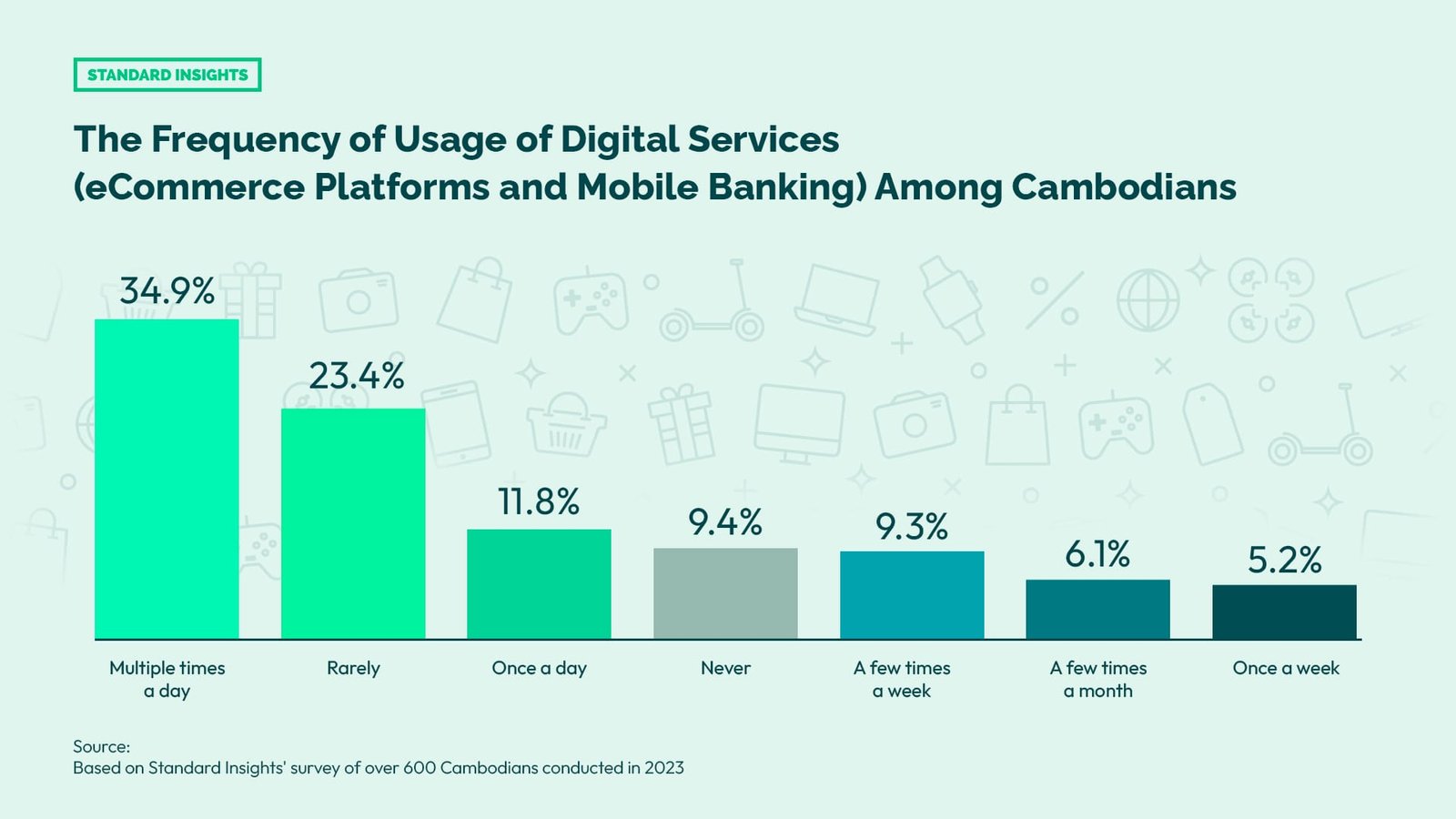The e-commerce market in Cambodia is growing at an impressive rate. In 2021, the market was valued at $970.1 million, a significant increase from $813.25 million in 2020. By 2025, it is expected to reach $1.78 billion, demonstrating rapid digital adoption. Revenue from e-commerce continues to rise, reaching $1.51 billion in 2024, up from $1.29 billion in 2023. This steady increase reflects the growing trust and engagement from consumers of Cambodia E-commerce Market Trends.
Key Sectors Driving Cambodia E-commerce Market Trends

Different industries contribute to the expansion of Cambodia’s e-commerce market. The fashion sector generated $254.4 million in revenue, while food and groceries led with $263.3 million in sales. These numbers highlight the diversity of Cambodia’s online marketplace and indicate significant opportunities for businesses in various industries.
Read Also: Cambodia Smart City Projects and Economic Transformation
The Rise of Digital Payments
The rapid adoption of digital payments is a key driver of Cambodia’s e-commerce growth. The Bakong Payment System, a blockchain-based platform developed by the National Bank of Cambodia, has revolutionized the way transactions are conducted. In the first half of 2024 alone, Bakong processed over $54.8 billion in transactions, showcasing its widespread acceptance among consumers and businesses.
Mobile payment platforms like Wing, Pi Pay, and TrueMoney are also gaining popularity, offering seamless and secure payment options for online shoppers. These platforms have made digital transactions more accessible, even in rural areas, where traditional banking services are limited. As a result, more Cambodians are embracing online shopping, further fueling the growth of the e-commerce market.
Social Media’s Role in Consumer Engagement
With a population of 17 million, Cambodia has a highly engaged online audience. 11.65 million Facebook users and 9.96 million TikTok users shape online shopping behaviors and marketing strategies. Social media is not just a marketing tool—it’s a shopping destination. Many businesses use platforms like Facebook Marketplace and TikTok Shop to sell products directly to consumers. Influencers and user-generated content also play a significant role in influencing purchasing decisions, as consumers trust recommendations from peers and online personalities. For businesses, leveraging social media effectively is crucial to building brand awareness and driving sales.
Challenges Facing Cambodia E-commerce Market Trends
Despite its impressive growth, Cambodia’s e-commerce sector faces several obstacles:
Logistics and Infrastructure Issues: Delivering products efficiently remains a challenge, especially in rural areas.
Low Digital Literacy: Many potential consumers still lack the necessary knowledge to navigate e-commerce platforms confidently.
Consumer Trust Concerns: The electronics sector, in particular, faces skepticism regarding warranties and product authenticity.
Addressing these challenges is crucial for businesses to maximize Cambodia’s e-commerce potential.
Future Growth and Government Support for Cambodia E-commerce Market Trends
Cambodia’s e-commerce market is expected to grow at a 31% compound annual growth rate (CAGR), potentially reaching $2.9 billion by 2025. This growth is supported by government initiatives such as the Digital Economy and Society Policy Framework, which aims to improve the digital business environment and boost investor confidence.
Read Also: The Fast Rise of Cambodia Consumer Market Trends
Conclusion: A Market Full of Potential
The Cambodia E-commerce Market Trends offer an insight into a market of vast opportunities for businesses willing to navigate its challenges. With rapid digital payment adoption, a young tech-savvy population, and strong government support, the sector is set for continued expansion. Companies that invest in trust-building, infrastructure, and digital marketing strategies will be well-positioned to thrive in this fast-growing market.
